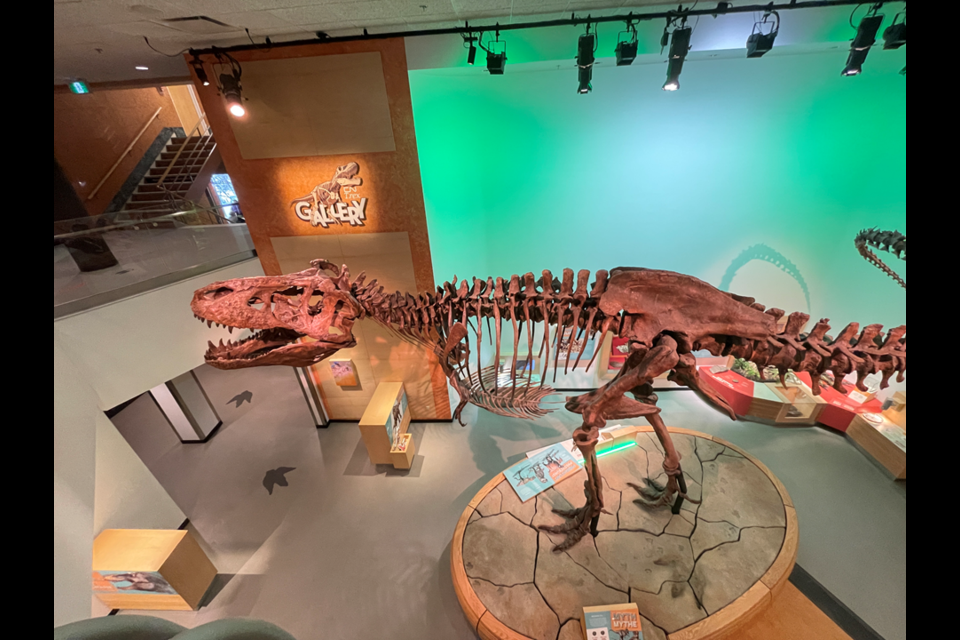REGINA — A University of Regina (U of R) research team has made a possible discovery on how dinosaurs healed from injuries.
The team examined the preserved blood vessel structures inside a rib bone from Scotty, the largest Tyrannosaurus rex in the world.
Jerit Mitchell, a PhD student in the department of physics at the U of R, joined the research project in 2019 and discovered the vessel structures after Scotty’s rib was scanned at the Canadian Light Source (CLS) for the first time.
“I remember showing my supervisors, Dr. Barbi and Dr. McKellar, a strange structure inside a scan of the rib that I originally didn’t give much thought to. They were quick to point out that what I discovered could possibly be preserved blood vessels, which has since led to a much more expansive research project,” said Mitchell.
X-rays produced by the CLS at the University of Saskatchewan allowed researchers to create a detailed 3D model of the dinosaur's bone and soft tissue structures, while not damaging the 66-million-year-old fossil.
Researchers then used chemical analysis to determine the elements and molecules that make up the vessel structure.
This allowed researchers to hypothesize how these structures were preserved for over millions of years.
From these X-rays, it was discovered that Scotty’s rib had a healed fracture, which possibly came from a fight with another dinosaur.
A discovery like this could provide key information on the healing potential of a T. rex.
”It was a real treat to be able to contribute to this research," said Mohsen Shakouri, a staff scientist at the CLS. ”We are pleased that our ultrabright synchrotron light helped the team gain new insights into the physiology of everyone’s favourite T. rex.”
Dr. Mauricio Barbi, physics professor at the U of R, said this finding could help pinpoint the search for soft tissues in fossils.
“Preserved blood vessel structures, like we have found in Scotty’s rib bone, appear linked to areas where the bone was healing. This is because during the healing process, those areas had increased blood flow to them,” said Barbi. “This work also provides a new way to compare how injuries healed in extinct animals, like dinosaurs, with living species, such as birds and reptiles, which helps us better understand the biology of the past, and also how life on Earth has evolved over millions of years.”
The study involved researchers from the U of R physics, biology, and earth sciences departments, along with the Royal Saskatchewan Museum (RSM).
“Fossils like those from Scotty are more than museum exhibits, as they continue to advance science in ways we never imagined when they were first unearthed,” said Dr. Ryan McKellar, RSM curator of palaeontology and adjunct professor at the U of R.
He added, “part of our role at the RSM is to ensure these specimens remain available for research, so it’s exciting to see new technology and collaborations between the RSM, the U of R, and the CLS revealing discoveries, while keeping the fossils intact for future generations.”

.png;w=120;h=80;mode=crop)


